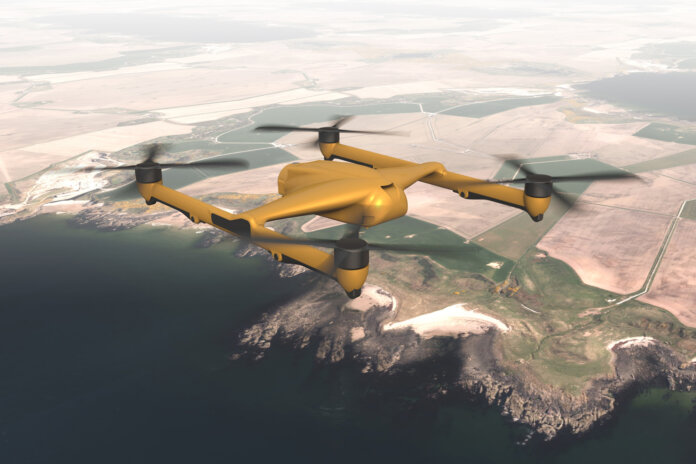A recent article in The Economist reported that Ukraine’s military has been utilizing unmanned cargo carrying aerial vehicles to evacuate critically wounded soldiers from the forward battlefield to more secure rear treatment centers.
This option is being pursued due to the hazards experienced in attempting to conduct traditional helicopter medivac. The danger of being observed by surveillance or detected by air defenses and then attacked by artillery or missiles has in some combat areas made it impossible to safely fly in some areas. Given the obvious signature of the manned helicopter and the exposure time to fly in, load, and exit the risk has become too great. Medevac by armored ambulances though safer are not an option for serious wounds where receiving life saving treatment is essential to patient survival and recovery.
Using an unmanned aerial vehicle in the forward medevac role offers a number of advantages. The UAV is smaller and can be more discrete and, thus, potentially less likely to be detected. The platform can be pre-staged being moved into the take-off site during a quiet period. The casualty can then be loaded under cover with the UAV able to then suddenly appear and depart flying low and fast away from the enemy threats. These actions significantly reduce the exposure time of the medevac UAV and significantly increase the successful completion of the mission. A UAS capable of vertical take-off and landing would gain further advantages of being able to utilize a
The Ukrainian sources did not identify the UAV model that they are employing, however, it was indicated that it is a commercially available system. It is, however, understood to carry up to 397 pounds (180 kilograms) with a range of more than 43 miles (69 kilometers). It could be similar to the BAE/Mallory T-650 (in photo). Ukraine’s Unmanned Robotic Battlefield Casualty Evacuation is likely used to move the casualty to a prearranged safer place and receive proper medical attention.
In fact, a number of UAVs specifically designed for moving cargo are being offered and are potential candidates with several of these already also undergoing demonstration and field evaluation by other militaries besides the Ukraine.
The British Royal Marine Commando’s in April 2021 trialled the Malloy Aeronautics T-600, an upsized, uprated version of its VTOL unmanned cargo-delivery drones. The T-600 showed its capability to deliver up to 250 kg (550 lb) payloads to a forward site. The Royal Marines are considering unmanned aerial systems both for cargo delivery in ship-to-shore operations and potentially in a CasEvac role.
The US Marines are also exploring the cargo UAV funding Kaman Air Vehicles’ development of the KARGO UAV with built-in autonomy, self-navigation and piloting. The VTOL platform is to have a range beyond 500 nautical miles (925 km) and carry up to 363 kg (800 pounds).
Although Ukrainian current use of the Casualty Evacuation UAV is likely used only for the most seriously wounded and the most difficult situations their success will surely find it being closely watched by other militaries.
by Stephen W. Miller













